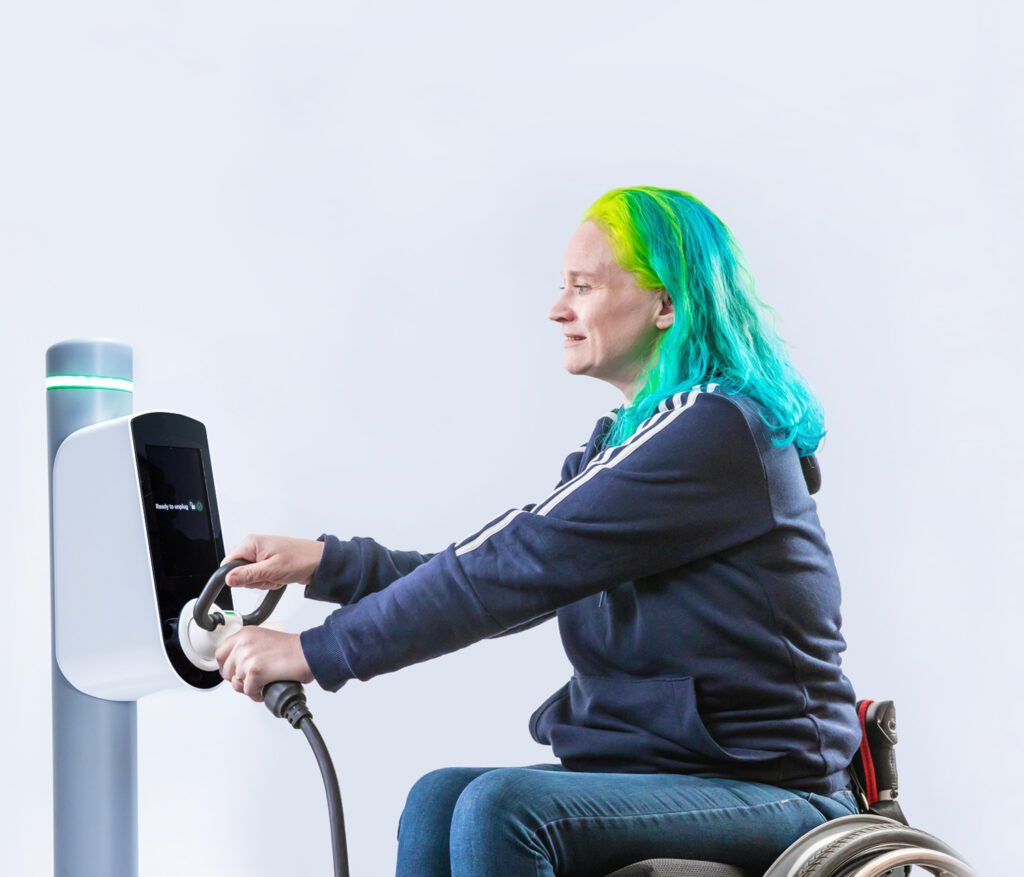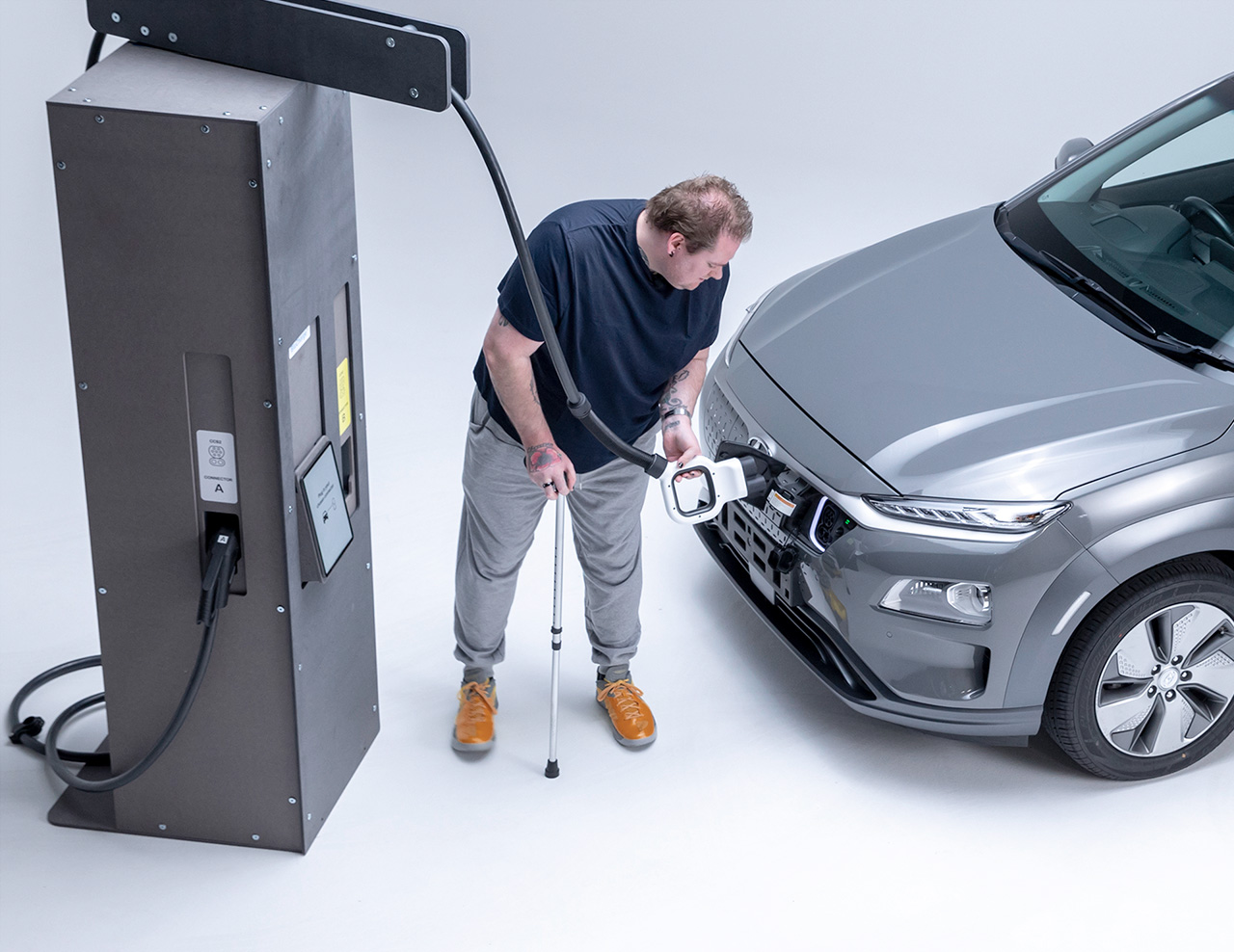Accessible EV charging
Design guidance for accessible public electric vehicle charging

Why you should consider accessibility
No one should be left behind in the transition to electric vehicles.
One in five people in the UK are disabled.
It’s estimated there will be 2.7 million disabled drivers or passengers in the UK by 2035, with 1.35 million expected to be partially or fully reliant on the public charging infrastructure.
The Motability Foundation (opens in a new window), has conducted extensive research to understand the barriers disabled people face in using electric vehicles. Through this research, they have identified that there is a lack of accessibility across the UK’s electric vehicle (EV) charging infrastructure.
Through our partnership with Motability, we at Designability have conducted extensive research and engagement with disabled drivers and passengers and those close to them, to understand the challenges they face and shape the solutions needed.
The result is this free open-source Design Guidance for accessible public EV charging. Our research also informed the national BSI standard for accessible EV charging PAS 1899:2022 (opens in a new window), which has been co-sponsored by Motability and the UK Government.
Watch this video introduced by Designability’s former Chief Executive, Catharine Brown, to see an overview of the project including our research with disabled people.
Discover our design guidance


Explore the design guidance
Take a look at our open-source suggestions for making public EV charging more accessible

New to our guidance?
Find out more about this guidance, including how the guidance was developed, who developed it, what it covers and how to use it



